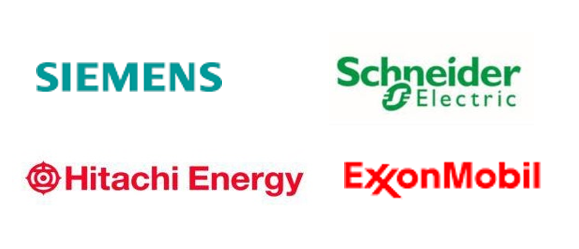Market Overview:
"The global sustainable aviation fuel (SAF) market size reached US$ 735.2 million in 2023. Looking forward, Reports and Insights expects the market to reach US$ 19,209.5 million in 2032, exhibiting a growth rate (CAGR) of 43.7% during 2024-2032. "
|
Report Attributes |
Details |
|
Base Year |
2023 |
|
Forecast Years |
2024-2032 |
|
Historical Years |
2021-2023 |
|
Market Growth Rate (2024-2032) |
43.7% |
The global market is registering significant revenue growth due to increasing emphasis on reducing carbon emissions in the aviation industry. SAF, derived from renewable sources such as biomass, waste oils, and algae, offers a sustainable alternative to conventional jet fuels. The market is driven by various factors, including stringent environmental regulations, rising awareness of climate change, and initiatives by airlines to achieve carbon-neutral growth. Also, government support and incentives for the production and use of SAF are contributing to market revenue growth. The market is expected to register robust expansion in the coming years as more airlines and airports commit to reducing their carbon footprint and adopting sustainable aviation practices.
-MARKET-IMAGE-1.webp)
Sustainable Aviation Fuel (SAF) Market Trends and Drivers:
Implementation of stringent environmental regulations and targets by governments and international organizations to reduce carbon emissions in the aviation sector is a key factor driving the demand for sustainable aviation fuel. These regulations encourage airlines to adopt sustainable practices and increase the use of SAF, thereby supporting market revenue growth. Also, growing concerns about climate change and the impact of aviation on greenhouse gas emissions have raised awareness among airlines and passengers. This has led to increased demand for sustainable aviation fuel as a viable solution to reduce carbon footprint and mitigate environmental impact, driving growth of the market.
Furthermore, continuous technological advancements in the production and refining processes of sustainable aviation fuel have improved its efficiency and reduced production costs. These advancements have made SAF more commercially viable and attractive for airlines, leading to increased adoption and market growth. Increasing collaborations and partnerships between airlines, fuel suppliers, and renewable energy companies are playing a significant role in promoting the development and use of sustainable aviation fuel. These partnerships facilitate the scaling up of SAF production, supply chain optimization, and infrastructure development, positively impacting market revenue growth.
Also, governments across the globe are introducing supportive policies, incentives, and subsidies to encourage the production and use of sustainable aviation fuel. These initiatives aim to accelerate the adoption of SAF and create a favorable market environment, driving the growth of the sustainable aviation fuel market.
Sustainable Aviation Fuel (SAF) Market Restraints:
One of the major restraints for the Sustainable Aviation Fuel (SAF) market is the high production costs compared to conventional jet fuel. The production of SAF involves complex processes and requires advanced technologies, which can result in higher production expenses. This cost factor limits the widespread adoption of SAF and poses a challenge for market growth. Currently, the production capacity of sustainable aviation fuel is limited compared to the global demand. The infrastructure for producing and distributing SAF is still underdeveloped, leading to supply constraints. The limited availability of SAF hinders its widespread use in the aviation industry and restrains market growth.
The availability and sourcing of feedstock for sustainable aviation fuel production is another factor causing a negative impact on the market. The primary feedstocks used for SAF production, such as biomass, waste oils, and renewable resources, have limitations in terms of their availability and scalability. Ensuring a sustainable and consistent feedstock supply is a challenge that affects the expansion of SAF production capacity. Despite the increasing interest in sustainable aviation fuel, the absence of comprehensive and globally harmonized regulatory frameworks poses a challenge for market growth. The lack of clear and consistent policies and incentives related to SAF production, distribution, and usage can deter investments and hinder the development of the market.
The use of sustainable aviation fuel requires modifications or adaptations to existing aircraft engines and fueling infrastructure. Ensuring compatibility and retrofitting existing systems can be costly and time-consuming, creating a barrier to the widespread adoption of SAF. The need for infrastructure upgrades and the associated costs can impact the market growth of sustainable aviation fuel.
Sustainable Aviation Fuel (SAF) Market Opportunity:
The increasing focus on reducing carbon emissions in the aviation sector has led governments to provide support and incentives for sustainable aviation fuel (SAF) production and adoption. This includes tax credits, grants, subsidies, and regulatory frameworks that encourage the use of SAF. These government initiatives present opportunities for companies to invest in SAF production and benefit from the financial incentives and market advantages.
Collaboration among airlines, fuel producers, and technology providers can create opportunities for the sustainable aviation fuel market. Joint ventures and partnerships can leverage the expertise and resources of multiple entities to accelerate SAF production, enhance distribution networks, and address infrastructure challenges. Collaborative efforts can also lead to the development of new technologies and processes, driving innovation and expanding revenue streams. Also, airlines are increasingly recognizing the importance of sustainability and are committing to reduce their carbon footprint. Many airlines have set ambitious carbon neutrality or net-zero emission targets, which require the use of sustainable aviation fuel. This creates a growing market opportunity for SAF suppliers to meet the demand generated by airline commitments and establish long-term partnerships.
The rising public awareness of climate change and environmental sustainability is influencing consumer preferences. Passengers are becoming more conscious of the environmental impact of air travel and are seeking airlines that prioritize sustainability. This demand for eco-friendly travel options presents an opportunity for the sustainable aviation fuel market to cater to environmentally conscious consumers and capture a share of the growing market.
Furthermore, continuous advancements in SAF production technologies and processes offer opportunities for improved efficiency and cost reduction. Innovations in feedstock sourcing, conversion techniques, and refining methods can enhance the economics of SAF production, making it more competitive with conventional jet fuel. Technological advancements also enable the development of novel feedstocks and sustainable pathways, further expanding the revenue streams in the sustainable aviation fuel market.
Sustainable Aviation Fuel (SAF) Market Segmentation:
-MARKET-IMAGE-2.webp )
By Fuel Type:
- Bio Fuel
- Hydrogen Fuel
- Power to Liquid Fuel
- Gas to Liquid
By Feedstock:
- Biomass-based
- Waste-based
- Residue-based
- Others
By End-Use:
- Commercial Aviation
- Military Aviation
- Business and General Aviation
By Region:
-MARKET-IMAGE-3.webp)
- North America
- Latin America
- Europe
- Asia Pacific
- Middle East & Africa
The sustainable aviation fuel market in North America is witnessing significant growth due to the strong emphasis on environmental sustainability and the presence of several major airlines. The United States, in particular, has a high demand for sustainable aviation fuel driven by regulatory initiatives and corporate sustainability goals. The region has a well-established supply chain, with several SAF production facilities and refineries. Consumer preference for eco-friendly air travel is also increasing, leading to a higher adoption of sustainable aviation fuel.
Europe region identified as a key market for sustainable aviation fuel, with several countries implementing regulations and policies to reduce carbon emissions in the aviation sector. The European Union's Renewable Energy Directive and the Sustainable Aviation Fuel Initiative are driving the demand for SAF. The region has a robust supply chain, with multiple SAF production facilities. Consumer preference for sustainable travel options, along with the commitment of European airlines to carbon reduction, is further boosting the market growth in Europe.
Furthermore, the sustainable aviation fuel market in the Asia Pacific region is experiencing significant growth due to the increasing air traffic and the focus on sustainable development. Countries like Australia, Japan, and Singapore are investing in SAF production and infrastructure development. Growing consumer awareness and preferences for sustainable air travel, along with government support, are driving the demand for SAF in the region. However, the market is still in its nascent stage, with limited production capacity and supply chain challenges.
Leading Sustainable Aviation Fuel (SAF) Providers & Competitive Landscape:
The sustainable aviation fuel market is characterized by intense competition among key players. Several companies are actively involved in the production, distribution, and development of sustainable aviation fuel. The competitive landscape is shaped by collaborations, partnerships, and investments to expand production capacity and enhance the supply chain. Major energy companies, biofuel producers, and airline companies are focusing on research and development activities to improve the efficiency and sustainability of sustainable aviation fuel. Additionally, government initiatives and regulations play a crucial role in driving market competition and encouraging the adoption of sustainable aviation fuel.
Company List:
- Neste Corporation
- Gevo Inc.
- SkyNRG
- Fulcrum BioEnergy
- World Energy
- Velocys
- Red Rock Biofuels
- LanzaJet
- REG Synthetic Fuels LLC
- TotalEnergies
- Shell Aviation
- BP plc
- Chevron Corporation
- ExxonMobil Corporation
- Renewable Energy Group (REG)
Sustainable Aviation Fuel (SAF) Market Research Scope:
|
Report Metric |
Report Details |
|
Market size available for the years |
2021-2032 |
|
Base Year |
2023 |
|
Forecast Period |
2024-2032 |
|
Compound Annual Growth Rate (CAGR) |
43.7% |
|
Segment covered |
Fuel Type, Feedstock, End-Use, and Regions |
|
Regions Covered |
North America: The U.S. Canada Latin America: Brazil, Mexico, Argentina, & Rest of Latin America Asia Pacific: China, India, Japan, Australia & New Zealand, ASEAN, & Rest of Asia Pacific Europe: Germany, The U.K., France, Spain, Italy, Russia, Poland, BENELUX, NORDIC, & Rest of Europe The Middle East & Africa: Saudi Arabia, United Arab Emirates, South Africa, Egypt, Israel, and Rest of MEA |
|
Fastest Growing Country in Asia-Pacific |
China |
| Fastest Growing Country in Europe |
Germany |
|
Key Players |
Neste Corporation, Gevo Inc., SkyNRG, Fulcrum BioEnergy, World Energy, Velocys, Red Rock Biofuels, LanzaJet, REG Synthetic Fuels LLC, TotalEnergies, Shell Aviation, BP plc, Chevron Corporation, ExxonMobil Corporation, Renewable Energy Group (REG) |
Frequently Asked Question
What is the expected growth rate of the global sustainable aviation fuel market?
The global sustainable aviation fuel market is expected to witness a CAGR (Compound Annual Growth Rate) of 43.7% during the forecast period.
What was the market size of the global sustainable aviation fuel market in 2023?
The global sustainable aviation fuel market size in 2023 was valued at US$ 735.2 Million.
What are some factors driving growth of the global sustainable aviation fuel market?
Increasing environmental concerns, stringent regulations and policies to reduce carbon emissions from the aviation sector, and the rising demand for sustainable and renewable fuel alternatives.
What are some major restraints affecting revenue growth of the global sustainable aviation fuel market?
High production costs compared to conventional aviation fuels, limited availability of feedstock for sustainable fuel production, and inadequate infrastructure for sustainable fuel distribution.
What are some opportunities in the global sustainable aviation fuel market?
Increased research and development, partnerships and collaborations between stakeholders, and the emergence of supportive government policies and incentives to promote the use of sustainable aviation fuels.

